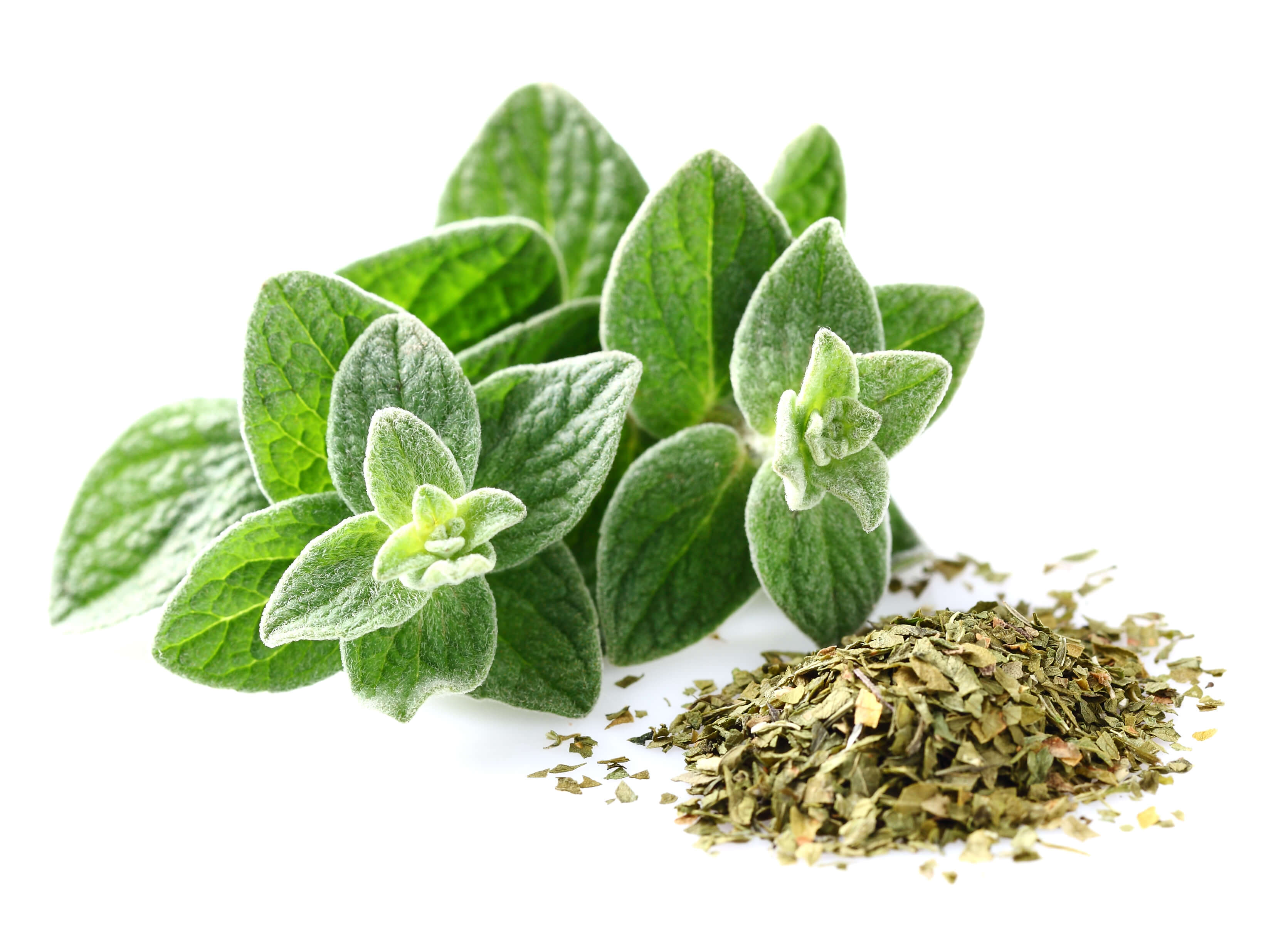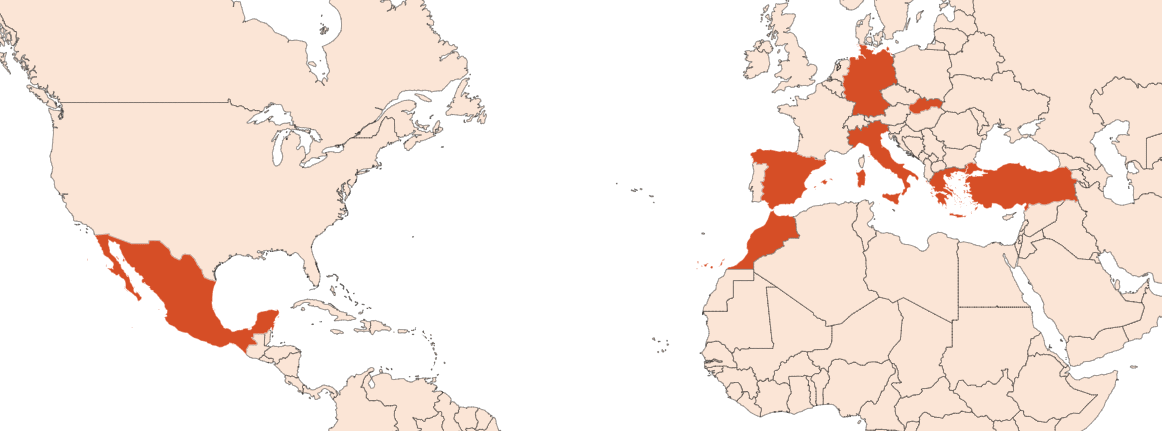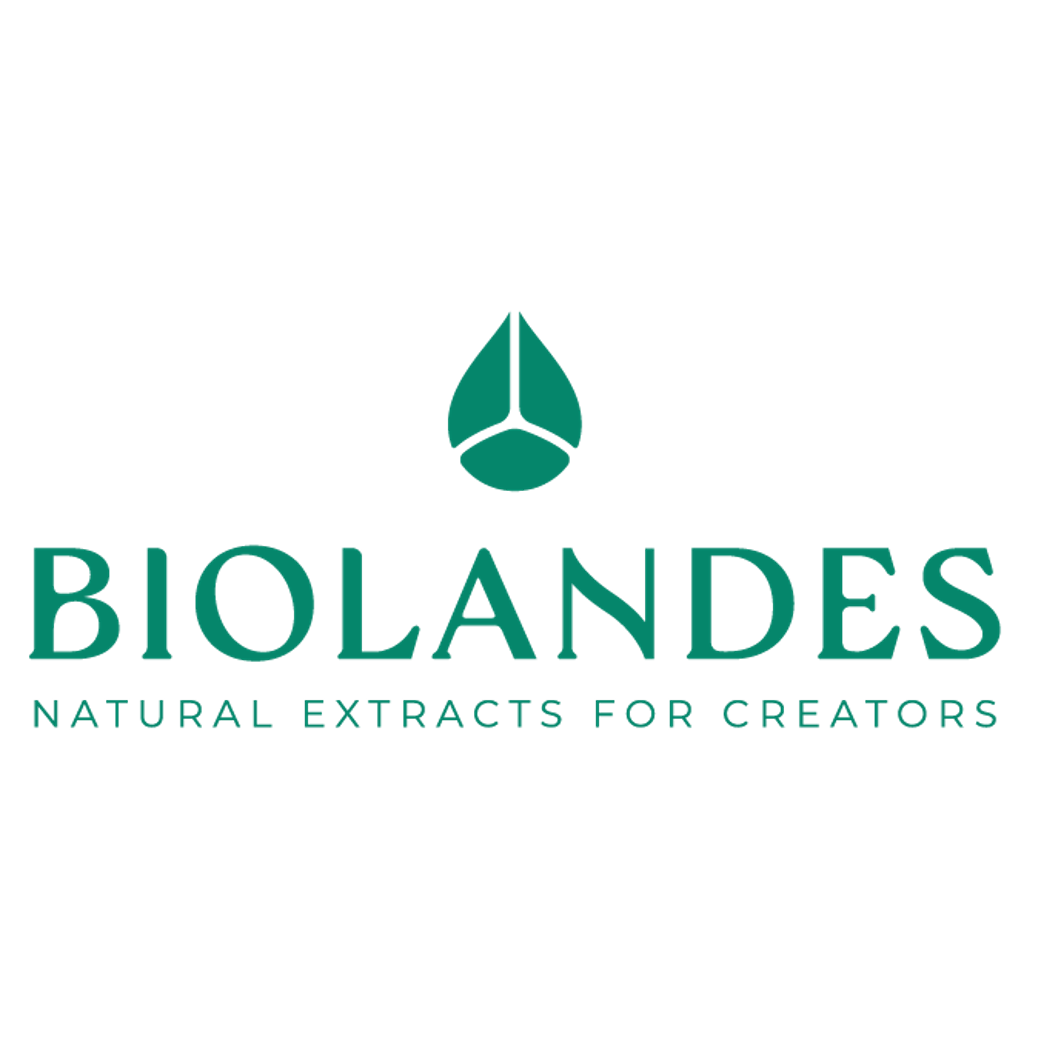Oregano EO
Naturelle
Herbal > Agrestic > Grassy > Leather

Crédits photo: ScenTree SAS
Latin name :
Origanum vulgare
Botanical profile :
Oregano is a herbal plant from the Lamiaceae family (as Red Thyme EO and Marjoram EO) and of the genus Origanum.
Geographic origin :
Oregano is cultivated in the high regions of the Balkans as Greece and Slovenia, in islands as Crete, but also in Turkey (largest producer), Mexico (second largest), in Italy, Germany, Spain and Morocco for example.
Chemotypes :
The genus oreganum is very largue, as it designates lots of species, belonging to various subgroups :
Origanum :
Origanum compactum : Oregano with compact inflorescence, found in Morocco and in the South-West of Spain, gives an oil rich in Carvacrol, Thymol, or both.
Origanum glaucum : Glaucous oregano of Afghanistan, containing Carvacrol and a small part of Thymol.
Origanum floribundum : Flower-bearing oregano, containing Carvacrol and a small part of Thymol.
Origanum vulgare : Common oregano - Oregano EO, to which belong two major species : var. macrostachyum (from Crete, a Carvacrol and Thymol chemotype) and var. virescens (containing Carvacrol and Terpineol or Thymol alone or Beta-Terpineol). Many sub-varieties also exist, but we are not explaining them in details here.
Majorana :
Origanum syriacum : Syrian Oregano (A thymol and a Carvacrol chemotype)
Origanum dubium
Origanum majoricum : Italian Oregano
Origanum majorana : Including Marjoram EO (Thujanols or Terpinen-4-ol chemotype)
Amaracus :
Origanum dictamnus : (rich in pulegone)
Origanum :
Origanum compactum : Oregano with compact inflorescence, found in Morocco and in the South-West of Spain, gives an oil rich in Carvacrol, Thymol, or both.
Origanum glaucum : Glaucous oregano of Afghanistan, containing Carvacrol and a small part of Thymol.
Origanum floribundum : Flower-bearing oregano, containing Carvacrol and a small part of Thymol.
Origanum vulgare : Common oregano - Oregano EO, to which belong two major species : var. macrostachyum (from Crete, a Carvacrol and Thymol chemotype) and var. virescens (containing Carvacrol and Terpineol or Thymol alone or Beta-Terpineol). Many sub-varieties also exist, but we are not explaining them in details here.
Majorana :
Origanum syriacum : Syrian Oregano (A thymol and a Carvacrol chemotype)
Origanum dubium
Origanum majoricum : Italian Oregano
Origanum majorana : Including Marjoram EO (Thujanols or Terpinen-4-ol chemotype)
Amaracus :
Origanum dictamnus : (rich in pulegone)
Extraction process :
Oregano is a group of leafy stems, with hairy leaves. Flowering occurs between june and august. The yield out of the obtention of the essential oil is always better during the hot flowering season, rather than the cold winter, even if oregano is a perennial plant. Its growth is majorly wild, but can also be controlled after 3 or 4 month of growth, under greenhouse. Propagation is done by sowing (during spring) or cutting, depending on the regions of culture, and the plant is cultivated once or twice a year. Plants are spaced-apart from at least 10 cm. One plantation can reach up to 63 000 plants per hectare. Soil can be treated with ammonium phosphate to enhance the harvesting yield.
Cutting of the plant starts when half of the plants have flowered, during warm season. Cutting is done manually, for about 1260 cumulated hours per hectare (labour supply represents the major part of the price of oregano). After harvesting, stems are dried in the shade for a few hours, to reach 7 to 12% of humidity. Leaves can also be frozen to extract them later.
Once dry, stems are compacted in a steam distillation tank. Under pressure, steam is injected in the tank and takes volatile compounds to the top of the distillation column. In one hour and a half, essential oil is obtained by decanting after being liquefied with a 0,08% yield, which is very low. This can explain the low usage of oregano in perfumes and its price.
Cutting of the plant starts when half of the plants have flowered, during warm season. Cutting is done manually, for about 1260 cumulated hours per hectare (labour supply represents the major part of the price of oregano). After harvesting, stems are dried in the shade for a few hours, to reach 7 to 12% of humidity. Leaves can also be frozen to extract them later.
Once dry, stems are compacted in a steam distillation tank. Under pressure, steam is injected in the tank and takes volatile compounds to the top of the distillation column. In one hour and a half, essential oil is obtained by decanting after being liquefied with a 0,08% yield, which is very low. This can explain the low usage of oregano in perfumes and its price.
Major Components :
Carvacrol (70-90%)
Thymol (2-10%)
Gamma-Terpinene (1-7%)
Para-Cymene (1-5%)
Beta-Caryophyllene (1-5%)
Thymol (2-10%)
Gamma-Terpinene (1-7%)
Para-Cymene (1-5%)
Beta-Caryophyllene (1-5%)
- Uses in perfumery :
- Oregano is rarely used in perfumes because of its price, but can be used in fine fragrance to bring a natural aromatic note and a leather nuance.
- Other comments :
- The term oregano comes from the Greek ''oros '' meaning mountain and ''ganos '' meaning ornament.
Oregano's quality varies according to its location, altitude, temperature of culture and many other parameters. This gave birth to many varieties and crossings incuding hirtum, vulgare, glandulosum and viride.
Oregano from the balkans is considered as the best quality of oregano on Earth. Many adulterations are to be mentionned, using oils with a close composition as Red Thyme EO or Marjoram EO, to make Oregano EO less costly. Standards make it possible to avoid those practices.
Marjoram EO is much more floral than Oregano EO, meanwhile Red Thyme EO and White Thyme EO are more animalic, because of the presence of Thymol. - Volatility :
- Heart/Base
- Appearance :
- Yellow liquid
- Stability :
- Terpenes contained in this oil may polymerize under the effect of strong oxydation.
- Price Range :
- €€€
- Aromatherapy :
Informations provided below are taken from reference works in aromatherapy. They are given for information purposes only and can not constitute medical information, nor engage the responsibility of ScenTree.
Oregano is used in aromatherapy for its bactericide, mycobactericide and fongicide vertues, and is recommended in case of bronchitis, oropharyngitis, paludism and cystitis above all.

Crédits photo: ScenTree SAS
- EINECS number :
- 616-905-4
- FEMA number :
- 2828
- Allergens :
- Geraniol - Citronellol
- IFRA :
- This ingredient is restricted by IFRA
- Annexe I :
- Some regulated synthetic ingredients are found in nature and in certain proportions in natural ingredients. This presence in nature has to be taken into account when calculating limits of use recommended by the IFRA. In case you do not know these concentrations, you can use the ones estimated by the IFRA. Here they are :
- Annexe I :
- Some regulated synthetic ingredients are found in nature and in certain proportions in natural ingredients. This presence in nature has to be taken into account when calculating limits of use recommended by the IFRA. In case you do not know these concentrations, you can use the ones estimated by the IFRA. Here they are :
| List of regulated compounds contained in this ingredient | ||
|---|---|---|
| Regulated ingredient name | CAS N° | Estimated Concentration |
| Citral | 5392-40-5 | 0,3 |
| l-Carvone | 6485-40-1 | 0,2 |
| Eugenol | 97-53-0 | 0,2 |
| List of regulated compounds contained in this ingredient | ||
|---|---|---|
| Regulated ingredient name | CAS N° | Estimated Concentration |
| Citral | 5392-40-5 | 0,3 |
| l-Carvone | 6485-40-1 | 0,2 |
| Eugenol | 97-53-0 | 0,2 |
To learn more about IFRA's standards : https://ifrafragrance.org/safe-use/library
ScenTree is solely responsible for the information provided here.


